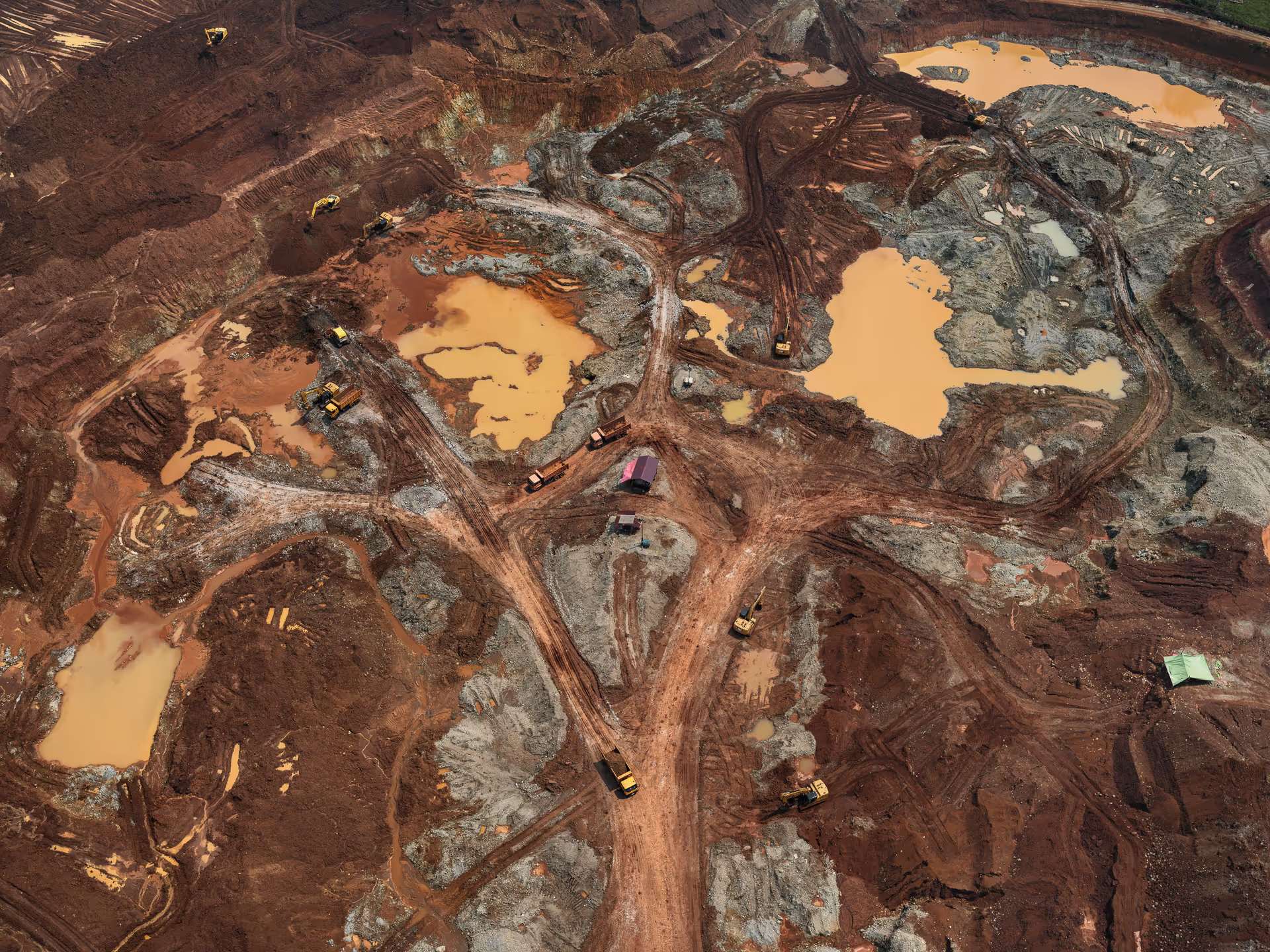




75 x 100 cm (29.5 × 39.4 in) 105 x140 cm (41.3 × 55.1 in) 135 x 180 cm (53.1 × 70.9 in)
edition of 5 (+1 AP) edition of 4 (+1 AP) edition of 3 (+1 AP)
Fine art prints available in:


Sulawesi is among the most biodiverse regions on Earth, home to pristine rainforests and countless endangered species. Yet beneath its lush treetops lies another kind of treasure: some of the world’s largest nickel reserves.
Nickel has become the oil of the 21st century — a key ingredient in the batteries that power electric vehicles. It increases the energy density of battery cells, allowing cars to drive farther on a single charge.
Alongside lithium, copper, cobalt, and rare earths, nickel is essential for producing wind turbines, solar panels, battery storage systems, and electric vehicles. As a result, Indonesia now finds itself at the center of a global rush for this metal.
Over the past decade, Sulawesi and other Indonesian islands have been transformed into vast mining and processing hubs, reshaping tropical landscapes into lunar landscapes.
The nickel lies in the red soil beneath the rainforest. To access it, forests are cleared, and the exposed earth is hauled away on trucks and rusty cargo ships to smelters, where the ore is heated to extreme temperatures to extract the valuable metal.
At the heart of Sulawesi stands the Morowali Industrial Park, the world’s largest nickel processing complex. Well secured from outside view, more than 100,000 people work there in a maze of smelters, factories, two seaports, and a private airport.
The facility is powered by two decommissioned coal-fired power plants from China, producing enough electricity to supply roughly five million U.S. homes. The site has frequently been criticised for its poor safety conditions and lack of environmental oversight. Nearby residents report polluted water, health problems, and destroyed land.
Nickel extraction and processing in Sulawesi are leaving deep scars on both the environment and the lives of the people who inhabit it. Still, the ambition of the Western world remains clear: to reduce our dependence on coal, oil, and gas. The transition away from fossil fuels marks one of the greatest industrial shifts in modern history.
Yet the minerals driving this green revolution are often mined far from where they are ultimately used. Meeting this unprecedented demand — without destroying ecosystems or communities — will be one of the defining challenges of our time.
After coal, oil, and gas, we have now entered THE MINERAL AGE.
75 x 100 cm (29.5 × 39.4 in) 105 x140 cm (41.3 × 55.1 in) 135 x 180 cm (53.1 × 70.9 in)
edition of 5 (+1 AP) edition of 4 (+1 AP) edition of 3 (+1 AP)
Fine art prints available in:
